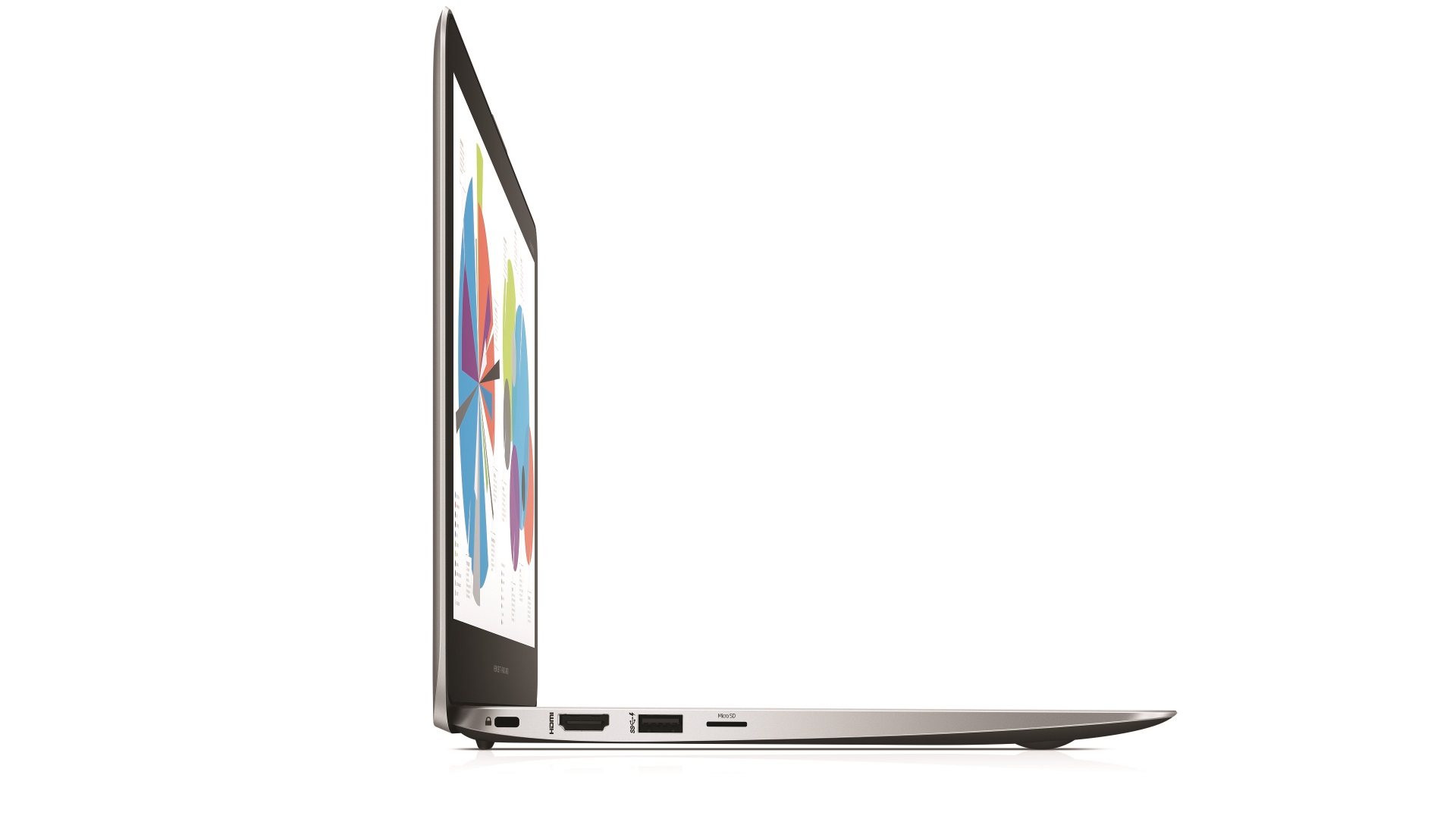The days of a new PC being a massive leap forward in outright horsepower are well and truly gone. However, that does not mean each new release is a disappointment.
The reality is that processing power needs have been more than met by recent generations of current range of processors for the vast majority of users, and so manufacturers have been cleverer in their combinations to achieve specific goals.
The HP Elitebook Folio 1020 G1 is just such a beast. Beautifully made in a very attractive package, it blends processing power and consumption to make a competitive proposition for the road warrior, but also with a nod to the increasingly collaborative style of working demanded today.
At its heart is the Intel Core M M-5y51 with 8GB of RAM and a fast 256GB solid state drive (SSD). The screen is a 31,75 cm (12.5″) QHD UWVA, ultra slim LED-backlit touch screen running a native resolution of 2560 x 1440. This is driven by Intel HD Graphics 5300. This all combines to give as much processing power as most desktops need, and one of the accessories available is a light weight docking station that means this little device can easily be a primary PC in combination with a large external screen and whatever other human interface devices a user might favour.
Processor
The M-5y51 processor compares quite favourably with the Core i5 4300U as featured in the Surface Pro 3, but benefits from the additional RAM over all but the top end Surface models.
The satin finish to the external, aluminium magnesium alloy case, with a flocked, high-grip finish underneath, means that the 1020 G1 is comfortable to handle and carry, with no awkward protuberances. The dimensions are 31 x 21 x 1.57 cm, starting at 1.17kg depending on configuration. However, as there are no major moving parts, the package also achieves MIL-STD 810G durability tests for drop, shock, vibration and more.
Native connectivity is via 2 x USB 3.0 sockets, full size HDMI and Wi-Fi extending to dual band wireless-AC 7265 802.11a/b/g/n/ac (2×2), with Miracast, WiDi and Bluetooth.
But one of the selling points of the 1020 G1 is its integration of features, not all of which are new, but are combined and managed to add value. For example, to facilitate collaboration, there is a managed suite of features including HD web cam, immersive DTS Studio Sound with stereo speakers, dual-array microphone and HP Noise Reduction Software. No longer does a user have to configure each parameter or input individually, as the combined suite can be managed as a set for an application such as Skype.
Security integration
Security too gets an array of features, well integrated and managed for ease of use, covering devices, data, and identities, with BIOSphere and Touchpoint Manager.
While the device reviewed was running Windows 8.1, it is safe to say that the user experience will be even better with Windows 10, particularly with the flexibility of full keyboard input as well as that lovely touchscreen. The only real criticism of the 1020 G1 is that the clamshell design could offer a wider opening angle. For use on an actual lap, as opposed to a hard surface, the opening angle was a bit of an issue but compensated for slightly by the viewing flexibility of the screen.
The next most important feature is the price. The HP EliteBook Folio 1020 G1 has a recommended retail price of €2,837 including VAT. By comparison, the Surface Pro 3 with Type Cover (Core i5, 8GB RAM, 256GB) is €1,489.
This is a not a direct comparison, but rather a context for which the same level of power and performance is available. The rugged, integrated nature of the 1020 G1 when combined with the HP application suite certainly adds a lot of value and brings the user another level of security and control, but obviously at a price. That said, in comparison to other devices in the niche, the 1020 G1 is priced competitively for the overall package.






Subscribers 0
Fans 0
Followers 0
Followers